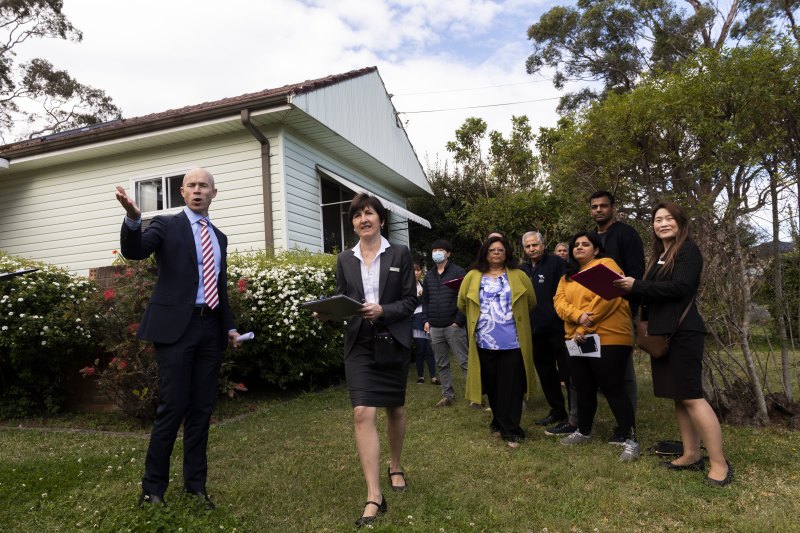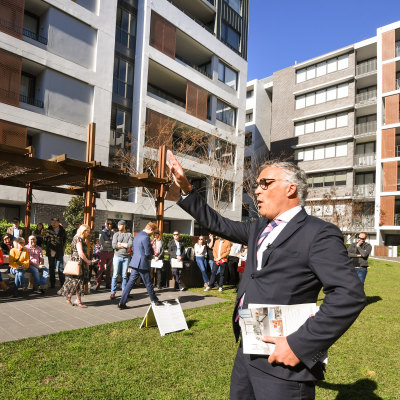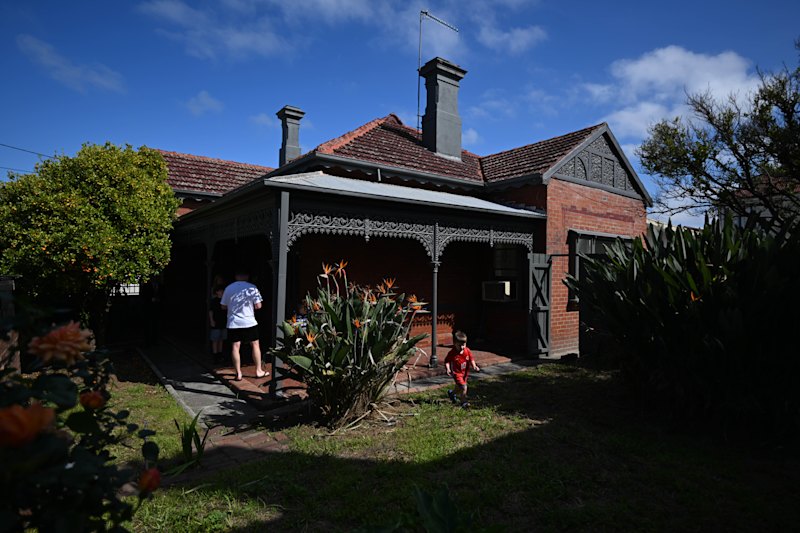House prices are falling, so why isn’t the auction market worse?

Potential home buyers are able to get a loan more easily now than during the last property downturn, but the amount of money they can borrow has dropped as interest rates rise.
The easier access to credit is helping to put a floor under auction clearance rates, alongside a shift in expectations from sellers who are becoming more likely to meet the market.

Sydney recorded a preliminary auction clearance rate of 62.1 per cent on Saturday, while Melbourne’s was 62.6 per cent, down from the 80 per cent levels reached last autumn.
The figures are usually revised lower mid-week as more auction results are reported, and 60 per cent is considered the threshold below which prices are likely to be falling.
During the last significant property downturn in late 2018, auction clearance rates fell into the 40 per cent range and property prices tumbled as buyers struggled to get a home loan.
Intense scrutiny due to the financial services royal commission prompted banks then to vet borrowers’ expenses, even asking how many coffees they paid for. This slowed down loan approvals and made it harder for buyers to bid at auction.

Now, mortgage brokers say there is less focus on individual spending, even as rising interest rates push property prices lower.
Atelier Wealth managing director Aaron Christie-David said banks have recruited staff and are better resourced now to approve loans fast.
Home-loan approval times are under three to four business days with many lenders, he said.
“It’s not that there’s less scrutiny, but there’s probably a lesser focus on it [expenses] compared to what we’ve had in the past,” he said.
“Customers have it in their mind that this is a bigger deal compared to what banks and brokers consider.”
One bank that used to scrape its customers’ bank accounts to calculate living expenses has now shifted to accepting customer-declared living expenses, he said.
“It’s the decrease in borrowing capacity that becomes the issue,” he said, as interest rates rise and banks assess buyers’ capacity to repay their loans if interest rates rise higher than first thought.
Potential buyers’ maximum loan sizes have been cut by about 20 per cent since the cash rate started rising in May, the Reserve Bank said on Monday.
Monthly repayments on a new loan are about 25 per cent larger now, at a cash rate of 2.35 per cent, than before May, the RBA’s head of domestic markets Jonathan Kearns said.
He repeated April modelling that showed a 200 basis point increase in interest rates would cut real housing prices by about 15 per cent over two years, emphasising that this was not a forecast.
Several bank economists expect property prices to fall between 15 per cent and 20 per cent peak to trough, including Barrenjoey which on Monday forecast 16 per cent national falls at a cash rate of 2.85 per cent. So far, Sydney values have fallen 7.6 per cent and Melbourne 4.9 per cent, while Brisbane is down 2.9 per cent and Perth has edged back 0.2 per cent.
Mortgage broker Chris Foster-Ramsay said lenders’ attitudes to home buyers’ expenses are similar now to during the recent property boom.
“The expenses, as long as they’re verified and they make sense, aren’t getting in the way, generally speaking, of an application,” the principal broker at Foster Ramsay Finance said.
He said home-loan approval times are fast now, often three to four days if not sooner, although buyers’ borrowing capacity has reduced.
Mortgage Choice Blaxland, Penrith and Glenmore Park principal Rob Lees said the focus on living expenses is easing off, especially from major banks who have increased their once-modest benchmarks of living expenses.
He has been surprised auction clearance rates are not lower, but said property prices have dropped.

“Vendors are definitely lowering their expectations, and I think that’s how they’re getting the sales and that’s why they’re not being passed in,” he said.
“Vendors are very keen to sell because they know if they don’t sell now and they wait six months they probably won’t get the same price.”
Ray White chief economist Nerida Conisbee said banks become more profitable in higher interest rate environments, meaning it is in their interests to encourage people to borrow money.
Vendors are adapting to the slower market and adjusting their expectations of the price they can achieve, she said, or deciding not to list their home in the first place.
“We see fewer auctions take place in a down market, so people will hold back and do private sale and decide not to sell, or only the best properties will go to market,” she said.
Several factors are still prompting purchases, such as record rent increases, rising renovation costs and population growth.
“A renovated family home – those seem to be selling quite well and holding up in pricing,” she said.
“Fundamentally, what tends to go to auction is what people want to buy, even in a down cycle.”
We recommend
States
Capital Cities
Capital Cities - Rentals
Popular Areas
Allhomes
More
/http%3A%2F%2Fprod.static9.net.au%2Ffs%2Fc62bcf08-bc6b-445a-94a3-ffc7ac35490e)
/http%3A%2F%2Fprod.static9.net.au%2Ffs%2F91900d82-6bf2-4d6b-adb8-c16336e7eeba)








